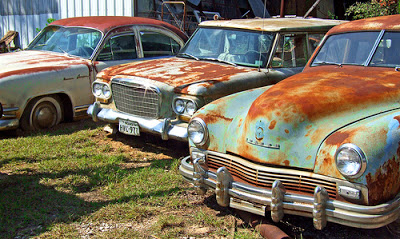 Selling a used car needn’t be hassle, especially with so many people out there willing to do the hard work for you. It’s essential that you get your car in tip-top working order with the right documentation to hand if you want to secure a good price and quick sale.
Selling a used car needn’t be hassle, especially with so many people out there willing to do the hard work for you. It’s essential that you get your car in tip-top working order with the right documentation to hand if you want to secure a good price and quick sale.
Before you advertise
Make sure the car is clean and tidy; hoover the inside, buy an air freshener, wash it thoroughly – make sure it’s sparkling and fresh. If you don’t have time, pay for a professional valet service; it could make the difference between a sale and a knock-back.
Repair paintwork damage and mechanical faults. Consider getting a new MOT – it will inspire confidence in the buyer.
Price
Look online for the prices of similar models, taking into account the year, condition and mileage of the motor.
Price your vehicle realistically, but don’t be afraid to charge what you really feel is the true value; you want to get the right price.
Advert
Make sure you describe your car as accurately as you can, relaying the important information that will interest buyers. This should include the manufacturer, model, year, gearbox, mileage, colour, engine size, number of doors, stereo, number of previous owners and the price.
Also quote how many months are left on your MOT, and importantly, where your car is located!
Make sure you clearly state the car’s condition, if it requires repairs or if you are selling it for parts only. Failure to accurately describe the car could result in legal action in the event of being miss-sold.
Documentation
Keep all your service records and MOT certificates safe and together in a folder.
Also keep receipts of any repair work carried out.
Make sure your log-book is stamped; it will add value to your car.
Avoid making copies of the documents for potential buyers and hand them over once the sale is agreed.
Once you agree to a deal you need to complete section 6 on your V5C registration document, with both you and the buyer signing section 8. Give the buyer the completed V5C/2 section and send the V5C to the DVLA.
Test Drive
Allow potential buyers to test drive the car; just make sure your (or their) insurance covers this.
Be sure to check their license, write down their details and check their photo.
Get the buyer to visit you at your home to avoid theft or fraud. Always accompany them on a test drive, or take a friend with you.
Agreeing a price
Have a price in mind and always start negotiations above this threshold; your buyer will haggle you down.
Don’t be afraid to turn down an offer under your asking price, someone else will be prepared to pay the car’s true value.
Receipt
Provide a receipt of purchase – this should be ‘sold as seen, tried and approved without guarantee’.
The receipt should include information like the manufacturer, model, registration number, mileage and the sale value. Also confirm in writing that the vehicle registration number matches the V5 document, and that this document has been completed and exchanged.
The receipt should be signed and dated by both parties.
Payment
Do not shake hands until payment has been received – cash is ideal, or an online transfer or CHAPS payment; always wait for cheques to clear.
After the deal is done, inform the DVLA that you are no longer the owner of the vehicle. It is your responsibility to send the completed V5C form to the DVLA and pass on the V5C/2 section to the new buyer.
If you don’t want to go through the process of finding a private buyer, you can take advantage of a firm like ASM Autos’ buy my car service, which allows you to obtain a fair price while having your car recycled for scrap. Visit asm-autos.co.uk for more information.

